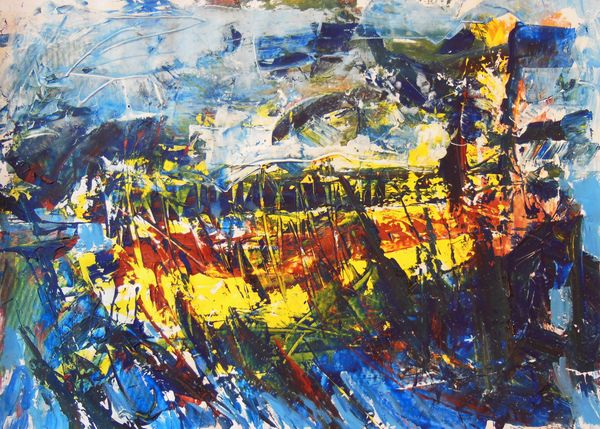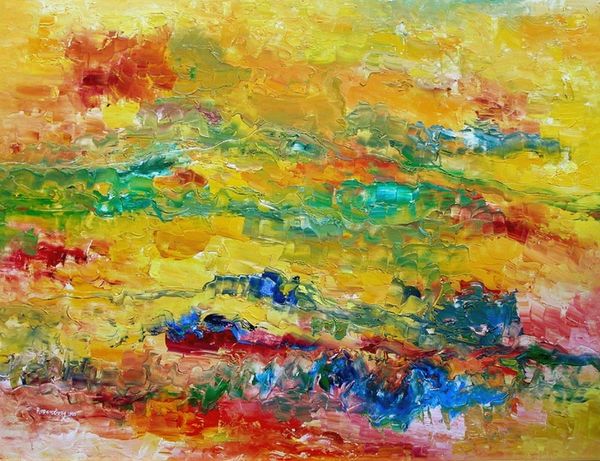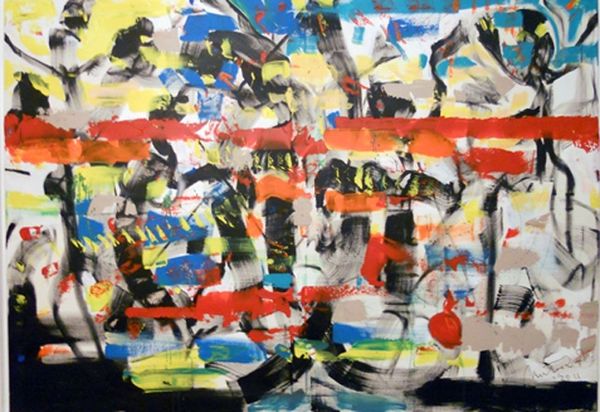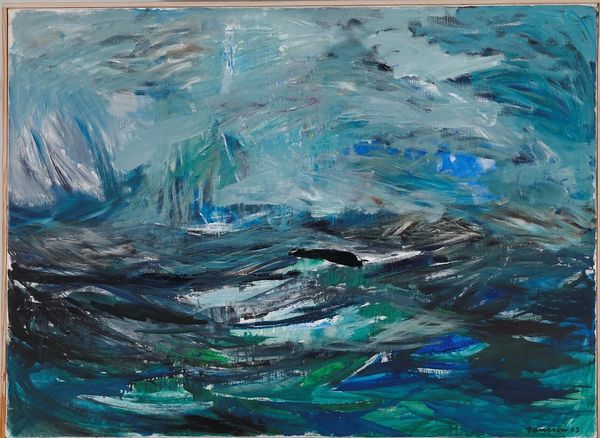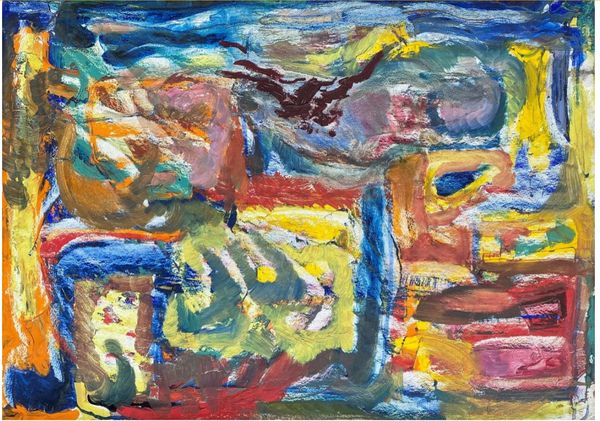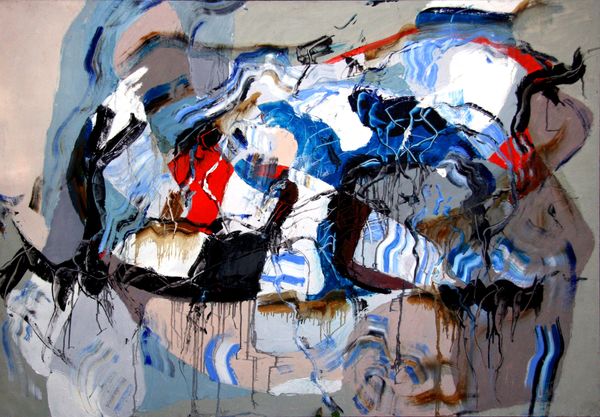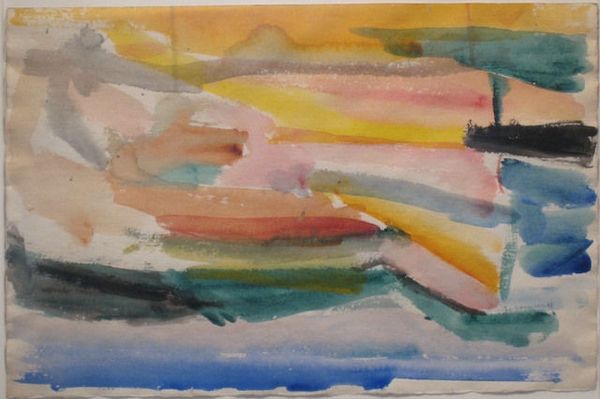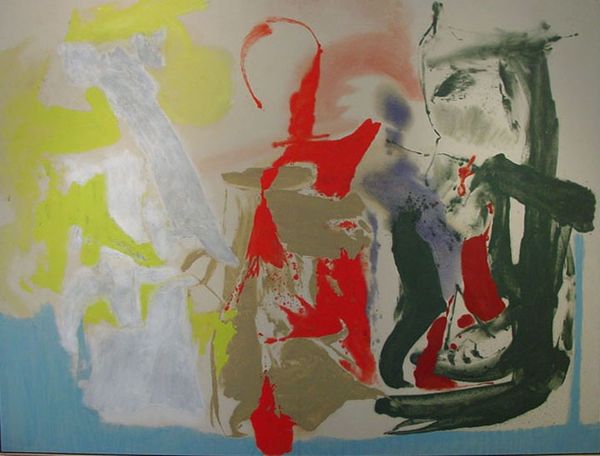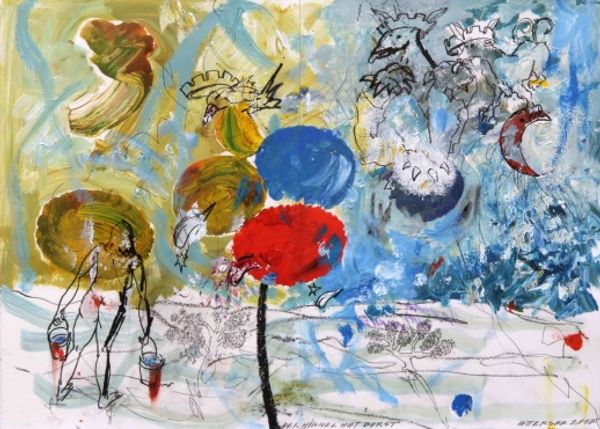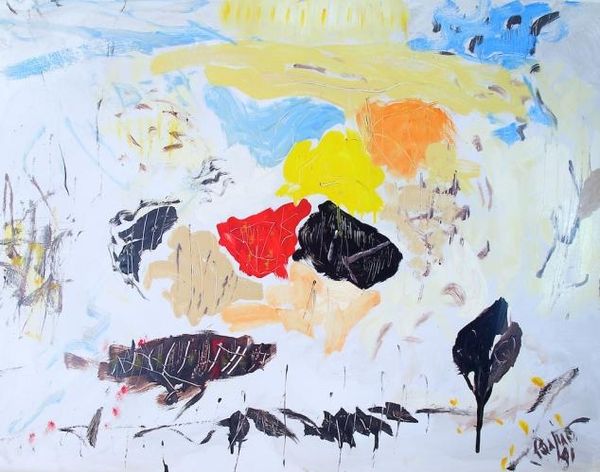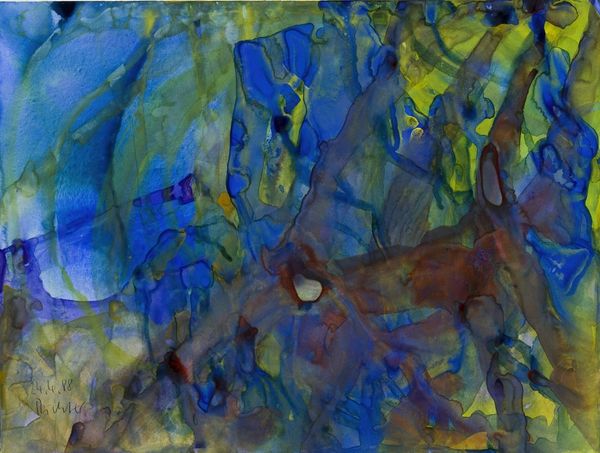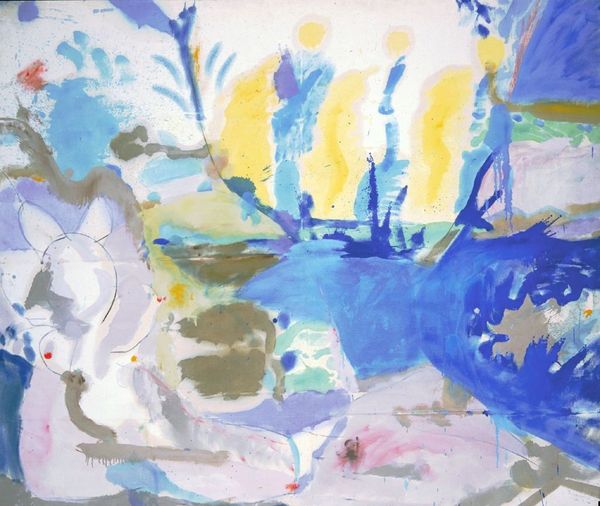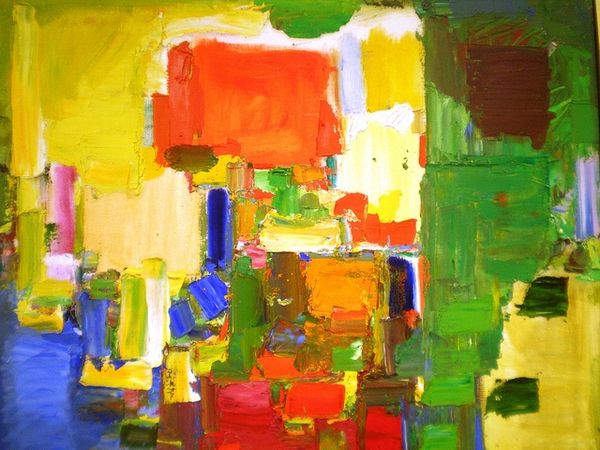
Copyright: Romul Nutiu,Fair Use
Editor: Here we have Romul Nutiu’s "Blue Danubius," an acrylic painting from 2011. It's really striking! All those energetic brushstrokes... It feels so dynamic, almost like a landscape viewed through a rain-streaked window. What catches your eye most about this piece? Curator: I'm drawn to the materiality of the paint itself. Notice how Nutiu manipulates the acrylic? Thick impasto strokes clash with thinner washes. Consider how this physicality challenges the traditional idea of painting as solely representational. What labor went into creating this texture? Editor: That's interesting; I hadn't really thought about the texture so much. It does look like he worked the paint quite a bit, building it up and then scraping it away. Is there a significance to the use of acrylic here? Curator: Absolutely. Acrylic allowed for faster layering and manipulation compared to oil. The choice signifies a move away from traditional techniques and reflects the quicker pace of modern life. It allows for an immediacy in mark-making and record the performative action in applying these gestures. Think about how this changes our consumption of art; does faster production devalue the work? Editor: I see what you mean. If it were oil paint, that depth of layering might suggest years of careful application. Here, the acrylic suggests immediacy. Does the “Danubius” in the title indicate a commentary on the river’s use and industrialization? Curator: It's possible. Considering the context, the river, heavily impacted by industry, becomes raw material. Nutiu is almost processing and transforming polluted water into art. His method then raises a questions concerning art and its social responsibility. Editor: I’ve definitely learned a lot from considering the material and social aspects of this work, it has brought this abstract expressionist painting to life. Thank you! Curator: Likewise. Looking beyond just the surface appearance unveils layers of meaning linked to the artwork's production, social environment, and cultural context.
Comments
No comments
Be the first to comment and join the conversation on the ultimate creative platform.
